 Feng Mengbo is the first artist to focus and use digital technology in China. He began to create interactive art in the early 1990s, especially well known for his video games. His art practice covers painting, calligraphy, installation, photography, video and music performance. He took part in the 45th Venice Biennale in 1993, Documenta in 1997 and 2002. The installation Ah_Q won the award of distinction of interactive art of Arts Electronica 2004. His important museum solo exhibitions include Dia Center of Art (New York, 2001), Renaissance Society (Chicago, 2002), Taipei Contemporary Art Museum (2003), Gallery Rudolfinum (Prague, 2008), UCCA (2009), MoMA PS1 (2010), and Today's Art Museum (2011). Important collections including MoMA, Guggenheim, LACMA, M+, Fukuoka Asian Art Museum and Art Museum of the Central Academy of Fine Arts.
Feng Mengbo is the first artist to focus and use digital technology in China. He began to create interactive art in the early 1990s, especially well known for his video games. His art practice covers painting, calligraphy, installation, photography, video and music performance. He took part in the 45th Venice Biennale in 1993, Documenta in 1997 and 2002. The installation Ah_Q won the award of distinction of interactive art of Arts Electronica 2004. His important museum solo exhibitions include Dia Center of Art (New York, 2001), Renaissance Society (Chicago, 2002), Taipei Contemporary Art Museum (2003), Gallery Rudolfinum (Prague, 2008), UCCA (2009), MoMA PS1 (2010), and Today's Art Museum (2011). Important collections including MoMA, Guggenheim, LACMA, M+, Fukuoka Asian Art Museum and Art Museum of the Central Academy of Fine Arts.
CAFA ART INFO: You were one of the curators for the First International Digital Printmaking Exhibition, please first introduce the origin of this exhibition? In the context with a global threat of the pandemic, have you encountered any difficulties in communicating with foreign artists when you started to plan such an international exhibition?
Prof. Feng Mengbo: As I have mentioned in the preface to the Exhibition, at the second plenary meeting of International Academic Printmaking Alliance(IAPA), Prof. Wang Huaxiang raised the discussion on the issue of defining prints within this new period. After discussions among all members, a statement was issued that digital prints, monoprints, and photography were officially included in the category of prints. By the end of last year, Prof. Wang entrusted me to preside over the planning of the First International Digital Printmaking Exhibition. With the generous and vigorous promotion of Prof. Luo Xiangke, the Exhibition was finally realized in the Changsha Normal University. As the International Academic Printmaking Alliance(IAPA) has been established for 5 years, we have contacted with experts and scholars from the printmaking departments of many foreign art schools over a long period, so that the influence of the pandemic did not lead to any problems in communication.
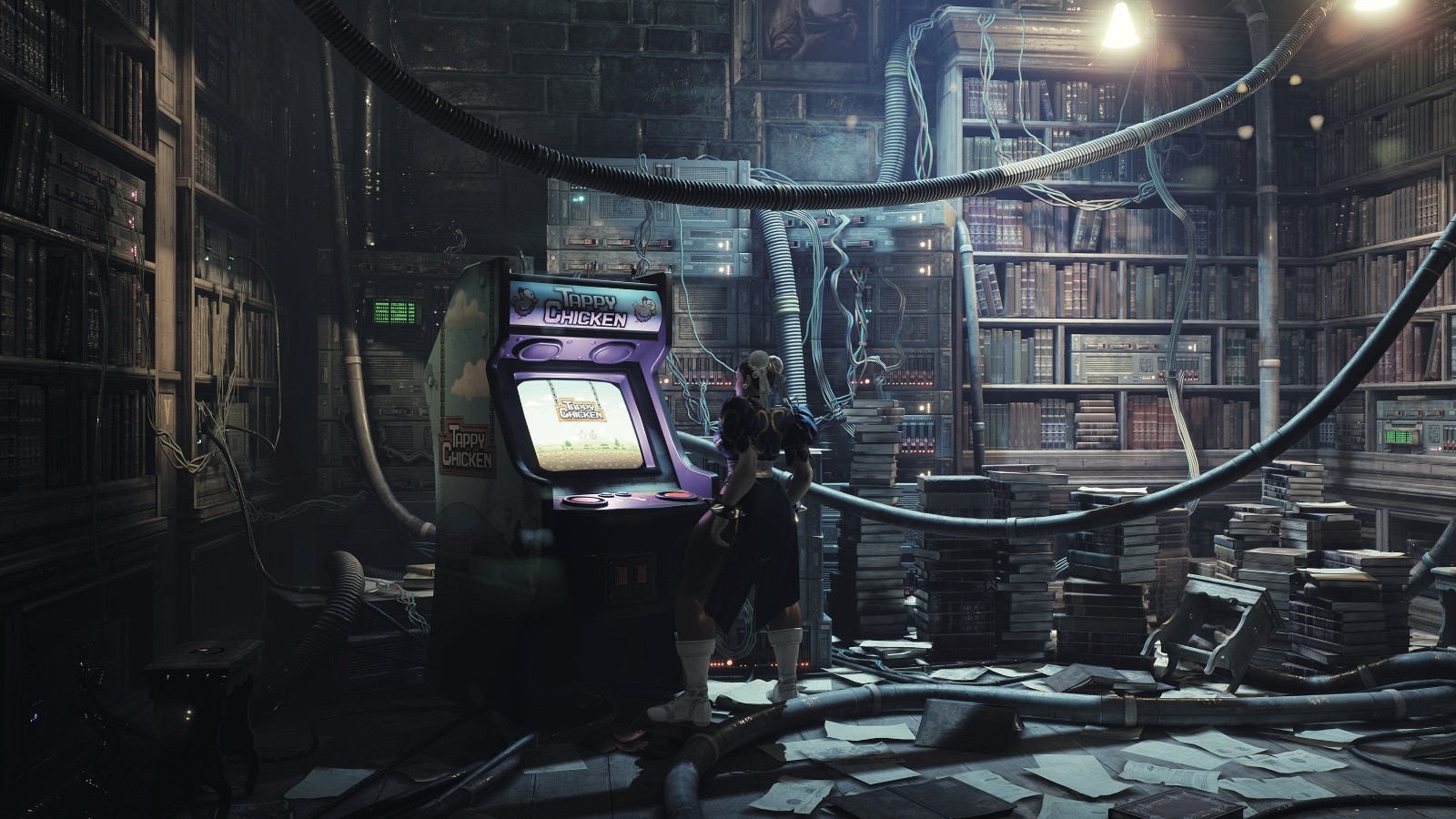 Feng Mengbo, The Library, video game engine, 139×78cm, 2021
Feng Mengbo, The Library, video game engine, 139×78cm, 2021
CAFA ART INFO: Although there were only digital prints included in this exhibition, we did not see any common digital media such as screens and projections on the site of the exhibition. It still fits our impression of traditional prints in the visual sense. So how does this exhibition reflect the characteristics of digital printmaking?
Prof. Feng Mengbo: When digital printmaking takes the original digital file as its original work, the output must be on paper, this is an issue that we hope to discuss in this exhibition. If a digital file can be used as standard, it is actually possible to display them in the forms of screens and web pages.
During the process of selecting works, we have stipulated that all the works must be created by digital means. In other words, an artist cannot take a picture of his drawing or scan it, then print it and hang it as a digital print. Digital techniques must be the main way of production. In the specific process of implementation, we finally decided that all the works should be printed out and displayed as “paintings” in the traditional sense. Uniformly, we use archival inkjet printing and aluminum mounting which actually bring the practice closer to the usual practice of photography exhibitions. It erases the factors such as special paper and ink which might create differences and we hope that audiences can focus their attention on the images themselves.
 Kong Guoqiao, No Title 2000-II, Digital Print, 109×71cm, 2020
Kong Guoqiao, No Title 2000-II, Digital Print, 109×71cm, 2020
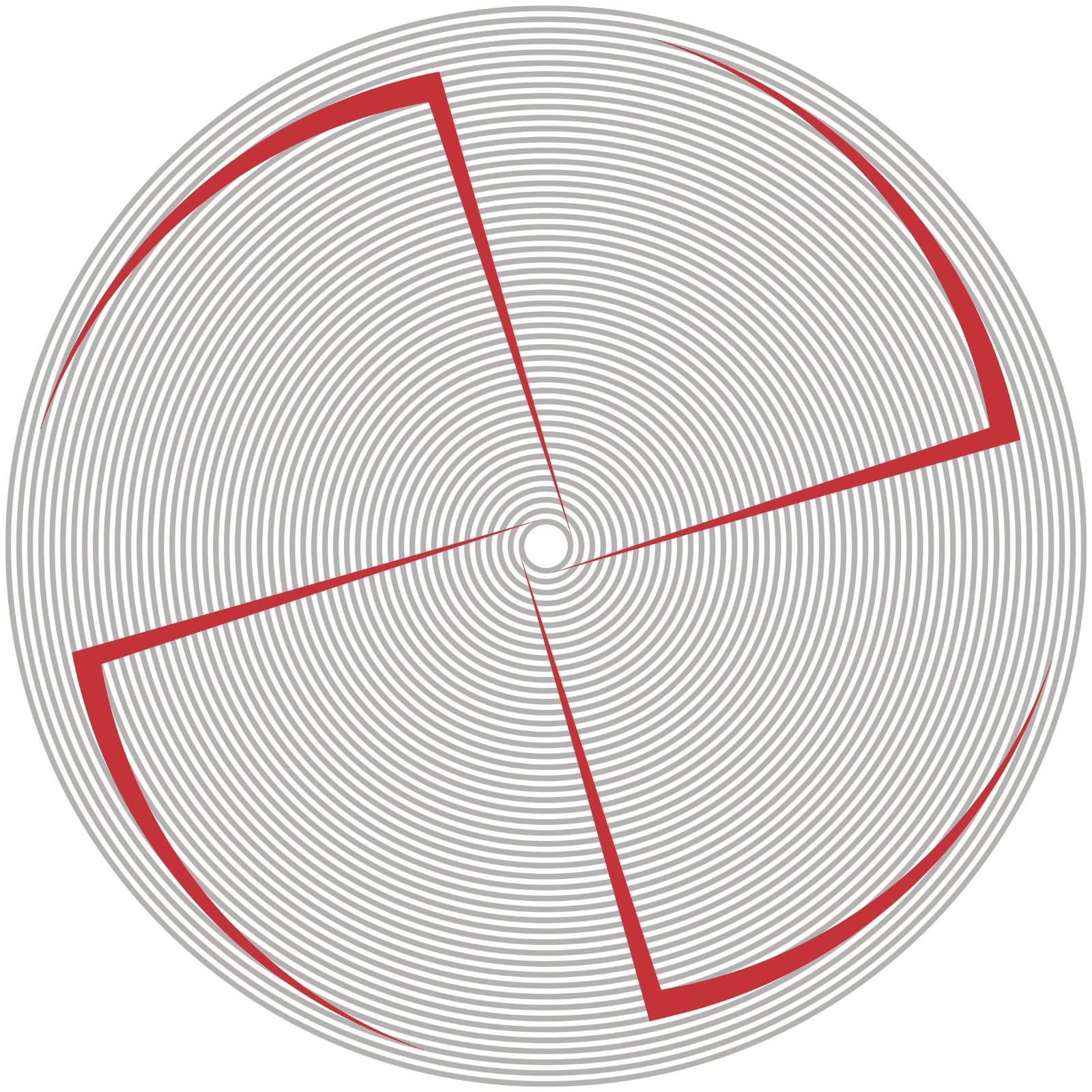 Meng Luding, Cinnabar, Digital Print, 100×100cm, 2021
Meng Luding, Cinnabar, Digital Print, 100×100cm, 2021
CAFA ART INFO: Digital and multimedia art have become popular for a while in the art world, but it has only been three years since digital printmaking was publicly recognized by International Academic Printmaking Alliance(IAPA). Many participating artists including you have a rich experience in digital and trans-boundary creative experiences, so why is it necessary to emphasize the concept of “digital printmaking” today? What is the difference between it and other digital media?
Prof. Feng Mengbo: We can discuss it according to specific backgrounds. The Central Academy of Fine Arts is the initiator of International Academic Printmaking Alliance(IAPA), and the International Printmaking Research Institute of the Central Academy of Fine Arts was established later. In this context, compared to “digital art”, our discussion on “digital printmaking” has a more practical starting point and foothold.
 Miao Xiaochun, The Triumph of Death Again, Digital Print, 53× 40cm, 2009
Miao Xiaochun, The Triumph of Death Again, Digital Print, 53× 40cm, 2009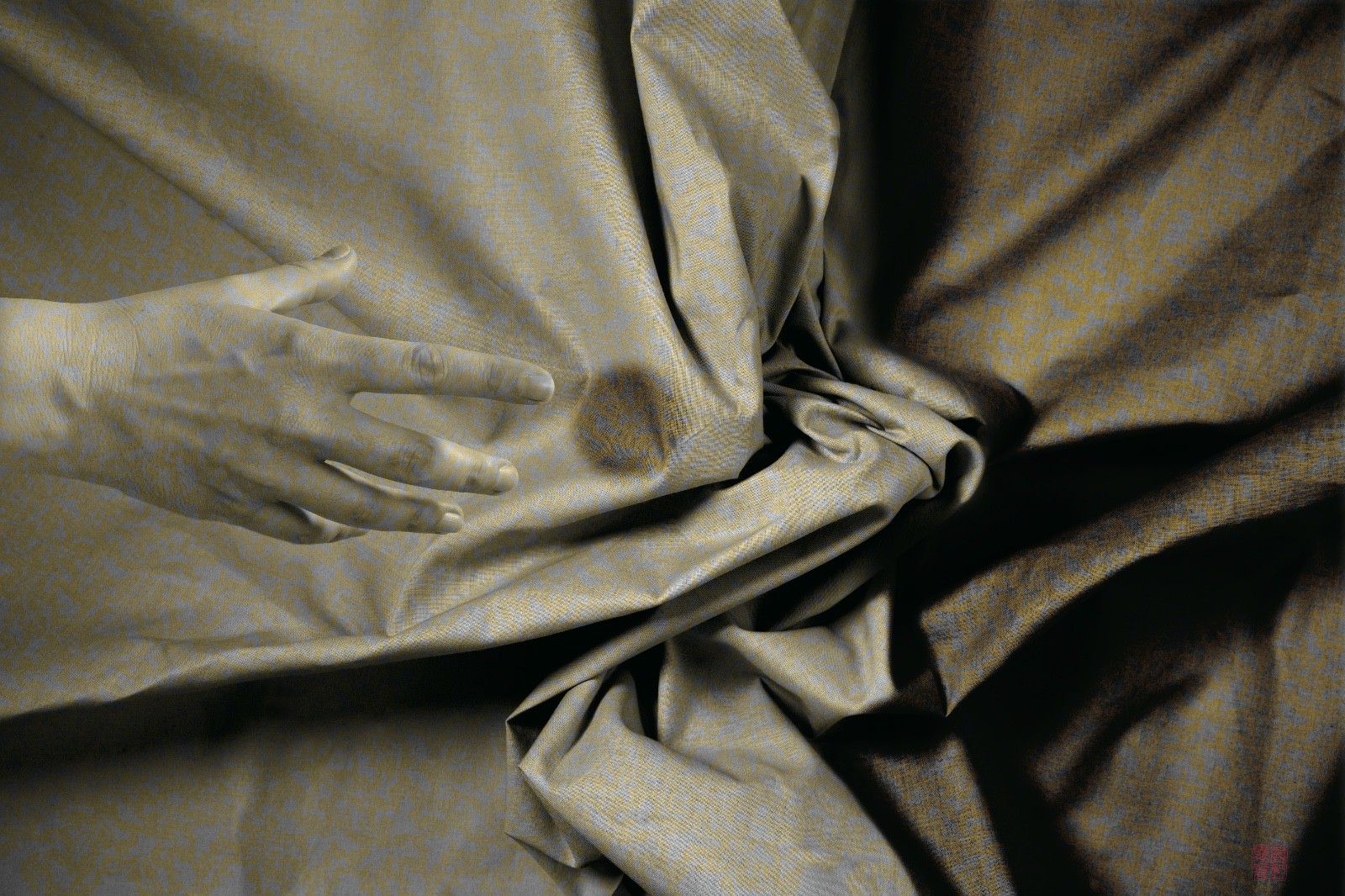 Alicia Candiani, Hidden Threats 1, Digital Print, 120 ×80cm, 2021
Alicia Candiani, Hidden Threats 1, Digital Print, 120 ×80cm, 2021
Meanwhile, our discussion was not limited to prints at all, as we are no longer living in the era of guilds of artists of the past. Contemporary art was no longer limited to any specific medium, as to whether it is digital or analog is no longer a problem. However, in the relatively traditional field of printmaking, novel things like digital printmaking challenge the concept of traditional printmaking in many ways, which remains relatively radical. But everything changes along with the development of the new epoch, with reference to the transition from analog to digital photography, digital printmaking has a promising future and we should take the initiative instead of avoiding it. Digital printmaking is an integral part of digital media, and the difference between it and other digital media may be that it absorbs and draws on the creative experience and rules of printmaking, especially attracting more printmaking artists to participate.
 Joseph Scheer, Fentonia species, Digital Print, 150 ×110cm, 2019
Joseph Scheer, Fentonia species, Digital Print, 150 ×110cm, 2019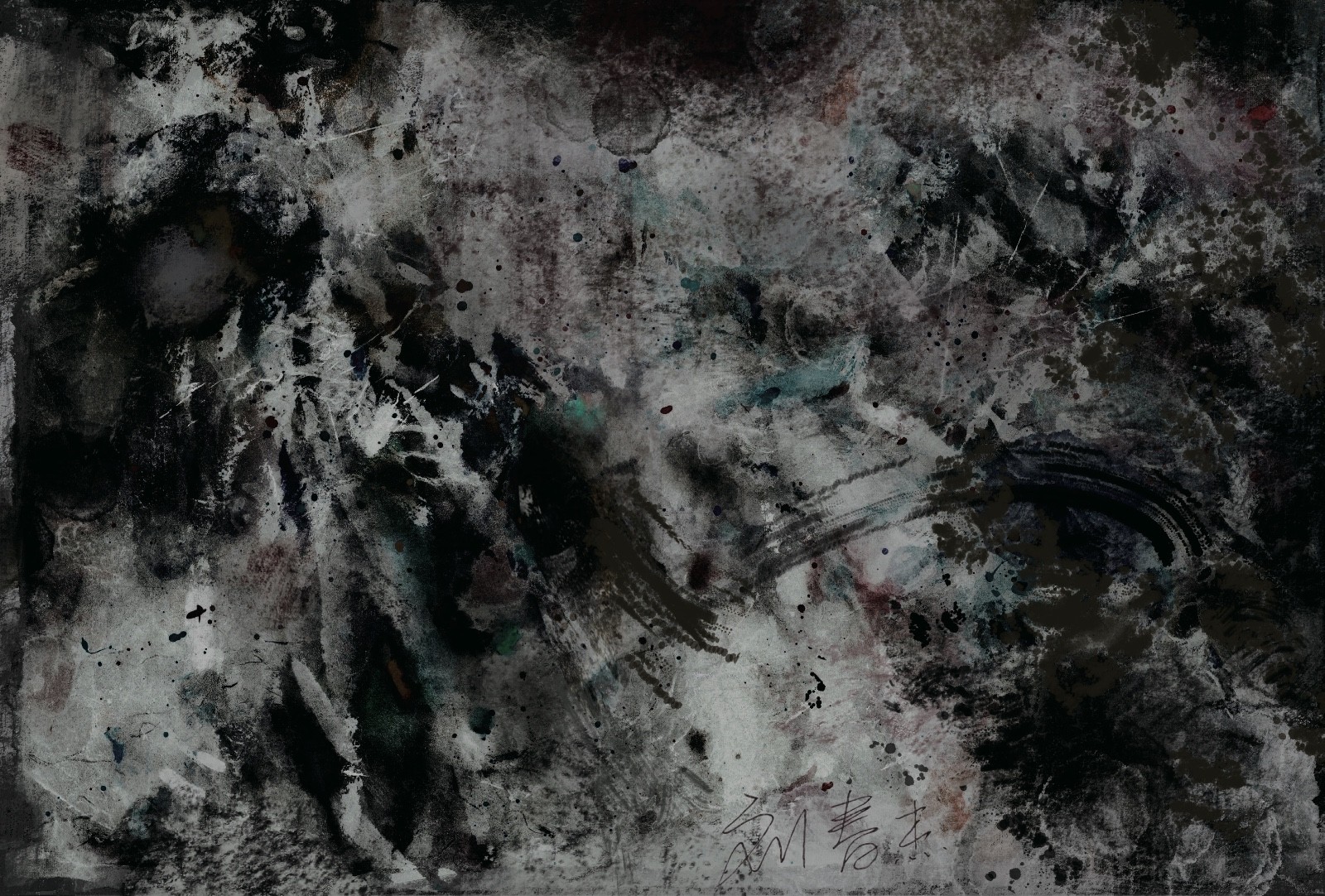 Liu Chunjie, Solitude between the River and the Sky 1, Digital Print, 75 ×51cm, 2021
Liu Chunjie, Solitude between the River and the Sky 1, Digital Print, 75 ×51cm, 2021
CAFA ART INFO: An academy is an important venue for the inheritance of printmaking traditions, thus what is the status of digital printmaking and other new technologies in the education of the Printmaking Department at CAFA?
Prof. Feng Mengbo: There are six studios at the Printmaking Department at CAFA, and each of them has its own tradition and direction. They have one thing in common, each studio is conducting experimental teaching and creation while guarding their respective tradition. There is a digital printmaking course on the general courses of the Printmaking Department; our technical studio, has a dedicated digital studio in the laboratory. Digital printmaking as a printmaking category, has actually existed for many years in the Printmaking Department of CAFA and other academies of fine arts, but we have never publicized it. Digital technologies as auxiliary or even main tools of printmaking creation are also quite common in the Printmaking Department at CAFA. It is also worth noting that, besides digital printmaking, taking the Sixth Studio that I have presided over as an example, new digital technologies including electronic game engines have also begun to become the content of learning and creation.

Yao Lu, A Replica of Traveling amid Mountains and Streams by Fan Kuan, Digital Print, 60 ×142cm, 2016
CAFA ART INFO: NFT has become a hot topic in the global art market while technology and scarcity in NFT ART are considered to be major selling points. What do you think of the relationship between NFT and digital prints? In your opinion, what is the future development of digital printmaking?
Prof. Feng Mengbo: In my opinion, NFT and art are not necessarily related. Currently, NFT is hyped and it may be more of an extension of a financial tool. Several extremely successful stories of NFT have obvious hype methods and are not universal. Because the content of digital prints is relatively small, it may be feasible to use NFT technology for packaging and circulation, but it remains to be observed and experimented on. However, for relatively large-scale digital media works, especially works with specific hardware and space requirements, NFT cannot satisfy them.
The characteristic of digital printmaking may lie in its conservative perspective, that is, its output and display methods are closer to traditional prints and photography and it can be integrated into the collector’s daily life. Personally, I am very optimistic about this prospect.
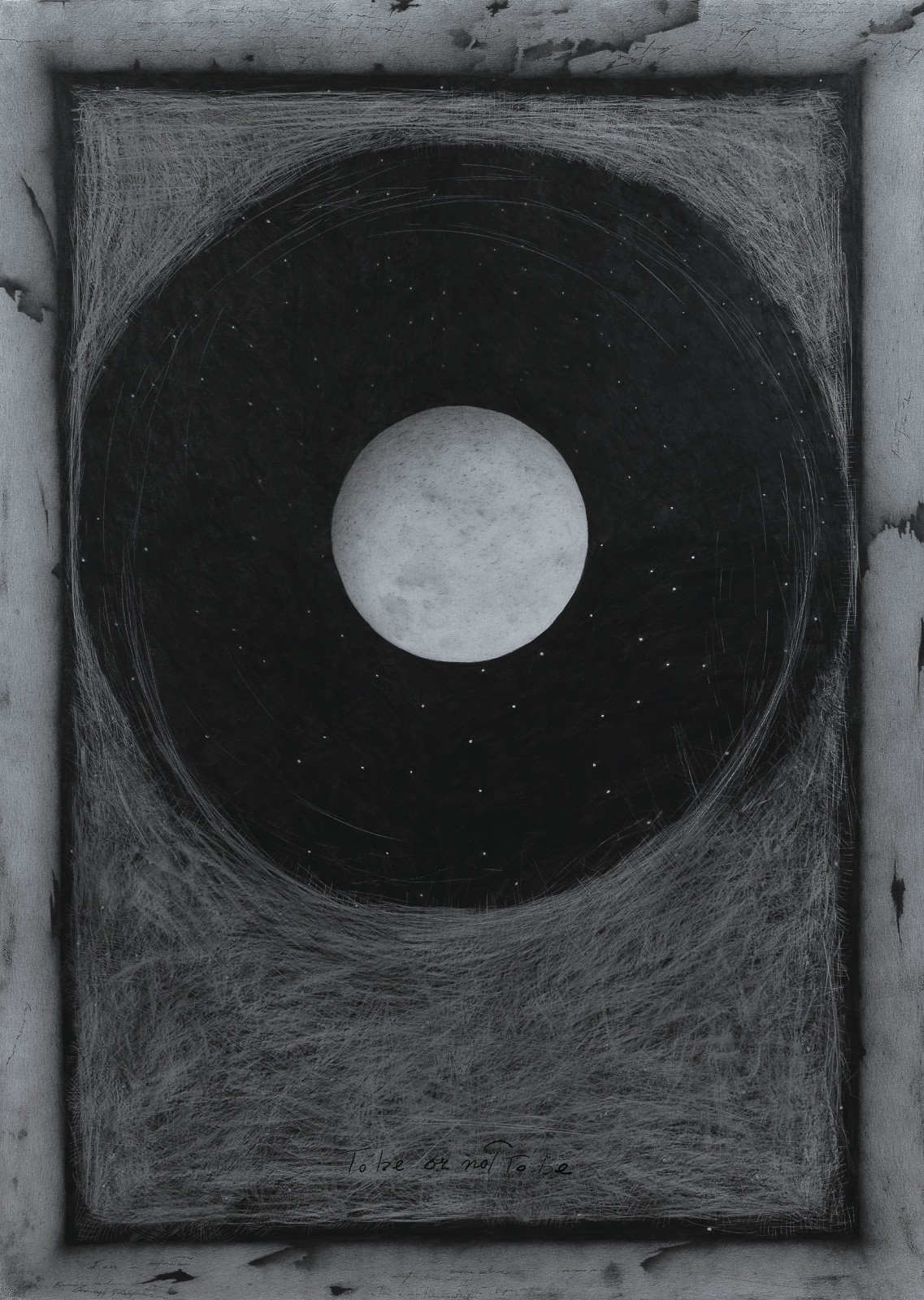 Andrea Lelario, To be or not to be, graphite, photography and digital processing, 63.97 ×90cm, 2021
Andrea Lelario, To be or not to be, graphite, photography and digital processing, 63.97 ×90cm, 2021
CAFA ART INFO: Some scholars mentioned in the seminar today that it is not only for creators, but for audiences, especially the new generation of audiences, the concept of “digital printmaking” and even “print” are confronted with many problems. You also mentioned in the preface that these issues in the dissemination and collection of digital printmaking have yet to be discussed. Can you talk about your thinking specifically from the perspective of digital printmaking and the audience?
Prof. Feng Mengbo: Printmaking has a relatively mature circulation and collection channels abroad, but they still lag behind in China. Generally speaking, not only prints, but art collection is still a very niche thing in China. With the continuous improvement of living standards, especially education, art collection has a promising future.
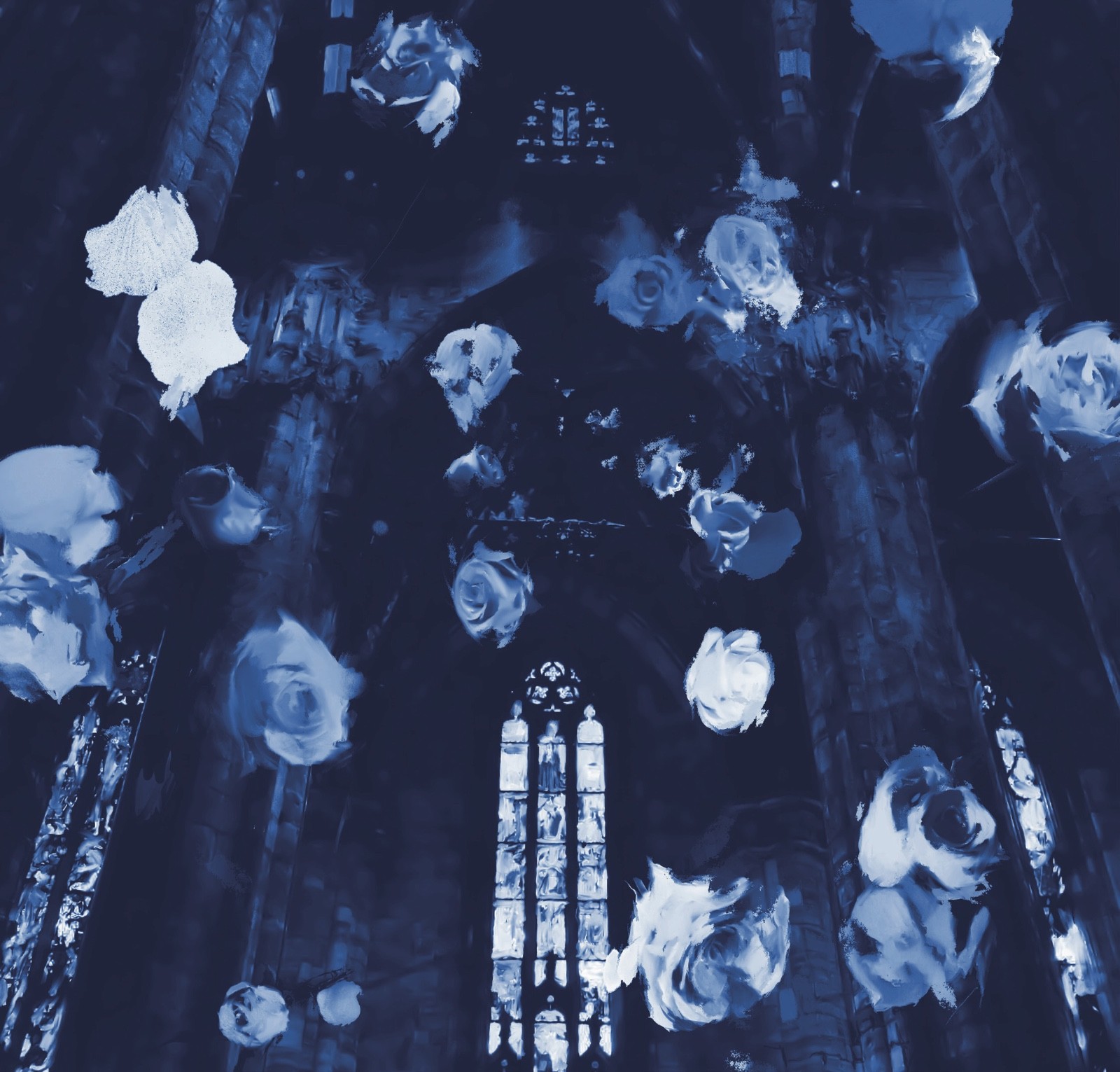 Kong Liang, Rose, Digital Print, 58.5×56cm, 2021
Kong Liang, Rose, Digital Print, 58.5×56cm, 2021
A major feature of printmaking is its pluralism, which makes its dissemination and collection more convenient, and its price is more acceptable to the public.
At present, the production and circulation of digital images have been very active, and we contact and consume a large number of digital images every day. Digital printmaking has begun to mature in concept and technology, and creative methods are becoming more diverse. I think that digital prints will become more and more acceptable to viewers and collectors.
CAFA ART INFO: In this way, it seems that we need to disassemble the “digital printmaking” to understand: in the specific field of printmaking in the art world, “digital” hinders its acceptance; and on the social level, for more audiences who don’t know art and art history but are used to digital images, “printmaking” are the part that confuses them.
Prof. Feng Mengbo: Anyone who is familiar with printmaking knows that the production process of printmaking is quite arduous. It contains a lot of traces of the artist’s handwork, and it feels more valuable. In fact, in the final analysis, the most important thing about cultural products is their spiritual value. A handicraft, no matter how scarce and expensive materials are used, it is still only a handicraft. However, artworks can sometimes use relatively cheap and crude materials and bold creative methods, and in the end they will have a very high market value which is spiritual.
 Valentina Formisano, Organized Society, Digital on Etching Print, 50×35cm, 2021
Valentina Formisano, Organized Society, Digital on Etching Print, 50×35cm, 2021 Zheng Qinyu, Today’s Moon and Ancient People-The Story of Antiques No. 3, Digital Print, 70×46cm, 2021
Zheng Qinyu, Today’s Moon and Ancient People-The Story of Antiques No. 3, Digital Print, 70×46cm, 2021
The reason why digital printmaking has been questioned in the field of printmaking is because people cannot see the amount of labor involved, that is, the traces of handwork in it. These are the more obvious characteristics of printmaking in the past. After these qualities are weakened or hidden, they will inevitably make people suspicious. But we just said that art is, in the final analysis, the creation of people and the creation of spirit. This shouldn’t be a problem. The traces of handwork may be the external appearance revealed in the creation process, but they are not the essential characteristics of all excellent artworks. Another problem may be that the infinite reproduction ability of digital files makes it difficult to guarantee its scarcity and authority. This concern is also why our first Digital Printmaking Exhibition uses printouts and traditional mounting methods, and uses the traditional authorization method of numbering and signature. At present, this is a relatively compromised and safe approach.
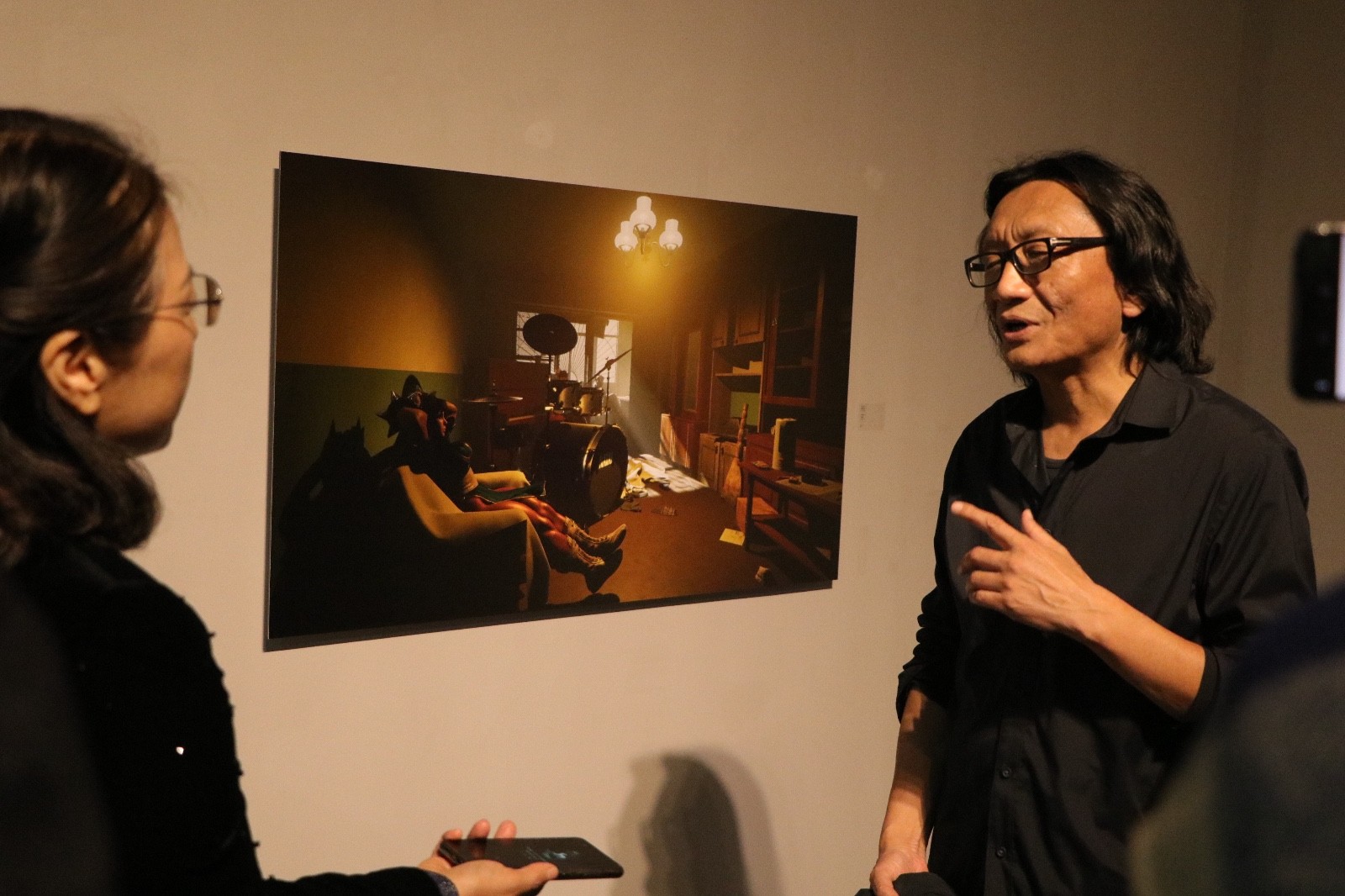 Su Xinping, Deputy President of the Central Academy of Fine Arts and Director of the Printmaking Art Committee of China Artists Association, was interviewed in the exhibition.
Su Xinping, Deputy President of the Central Academy of Fine Arts and Director of the Printmaking Art Committee of China Artists Association, was interviewed in the exhibition.
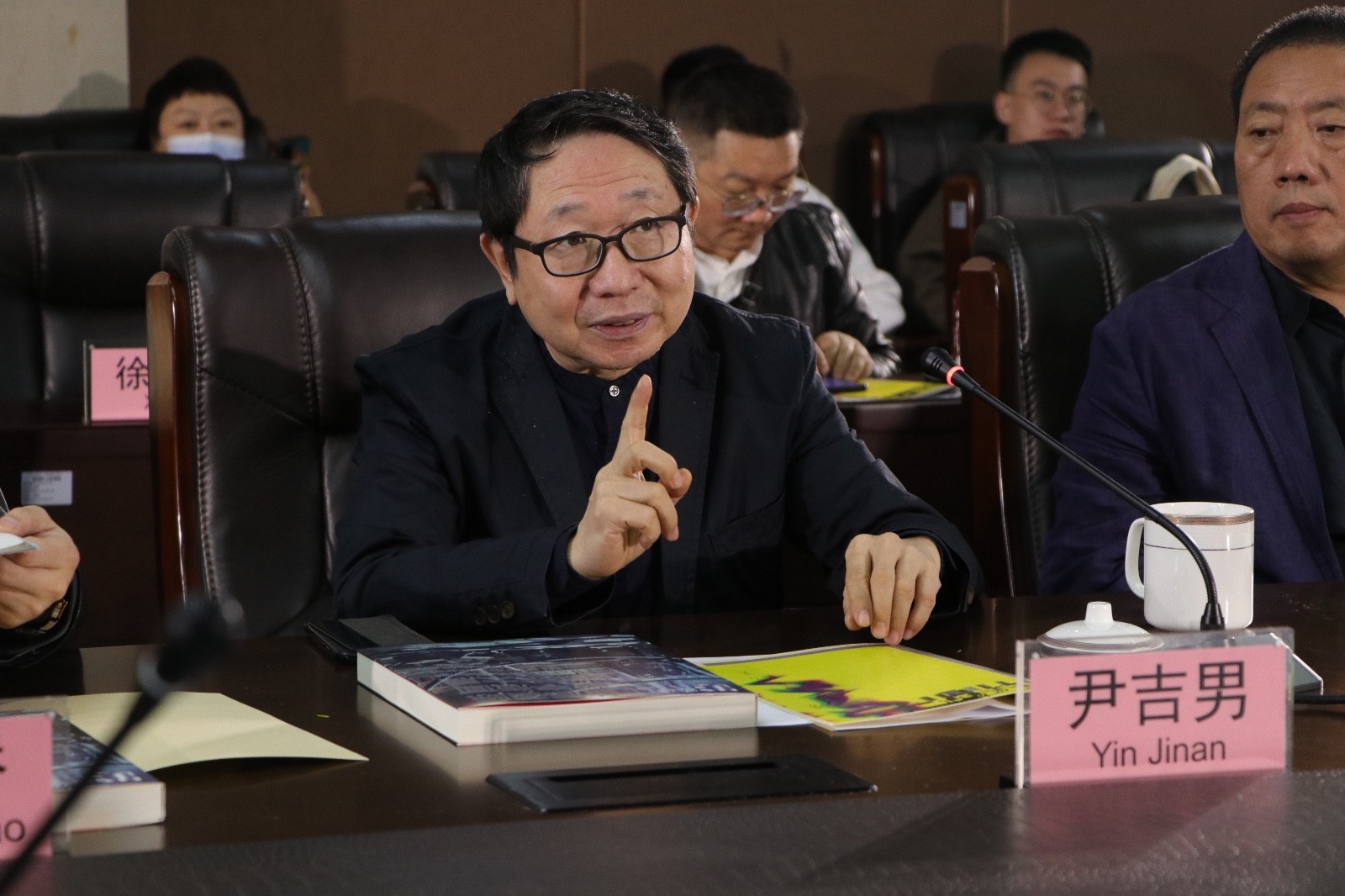 Yin Jinan, Professor of the Central Academy of Fine Arts and Dean of the Advanced Institute of Image and History at the Guangzhou Academy of Fine Arts, presided over the exhibition seminar.
Yin Jinan, Professor of the Central Academy of Fine Arts and Dean of the Advanced Institute of Image and History at the Guangzhou Academy of Fine Arts, presided over the exhibition seminar.
“Printmaking" is an old term composed of “print” and “making”, it is a combination of plate making and printing, and there is no concept of “painting” in it. At the seminar, Prof. Yin Jinan said something that I found very interesting. He talked about the process of changes from aristocratic art to the art of small landlords and common people. Prints, which were rare copies in ancient times, now spread freely through the Internet, which are in fact completely consistent with the development of the entire society, technology and art. The purpose of printmaking production, the relationship between producers and consumers, are always changing. In this sense, printmaking is a media most synchronized with the epoch, and it has a pioneering nature. Thus, I think digital printmaking is going in the right direction.
CAFA ART INFO: In the seminar, many teachers quoted the views from Walter Benjamin’s The Work of Art in the Age of Its Technological Reproducibility and Other Writings on Media. When Benjamin discussed it, he mainly focused on photography and film, so can we say that today, digital prints reflect “its technological reproducibility” that we live in?
Prof. Feng Mengbo: Yes, Benjamin’s view cannot foresee and contain art in our post-mechanical reproduction era. It may be too early to define “the digital reproduction era”, but digital media art, including digital printmaking, has already taken place. As an artist who received traditional art education and took the lead in using digital media to create, I am fascinated by both the analog (that is, the era of mechanical reproduction proposed by Benjamin) and the digital perspectives. We should not be bound to any medium. In the field of art, digital technology does not mean correctness or progress. Digital printmaking is just a new method of printmaking. We hope to use it as an opportunity to release more creativity.
 View of the Opening Ceremony
View of the Opening Ceremony
Interview and text by Luo Yifei, trans. by Sue/CAFA ART INFO
Image Courtesy of the Organizer.




























